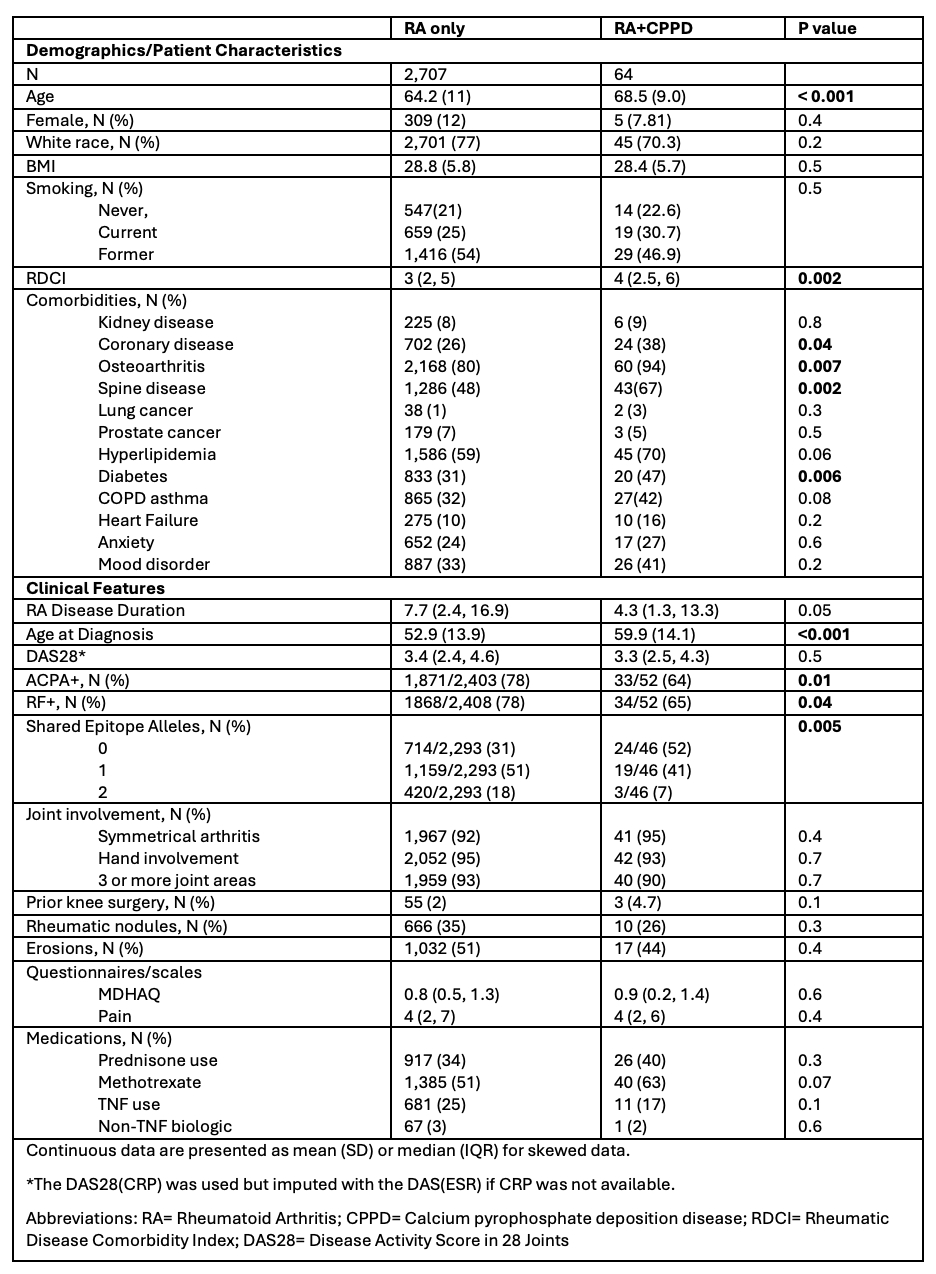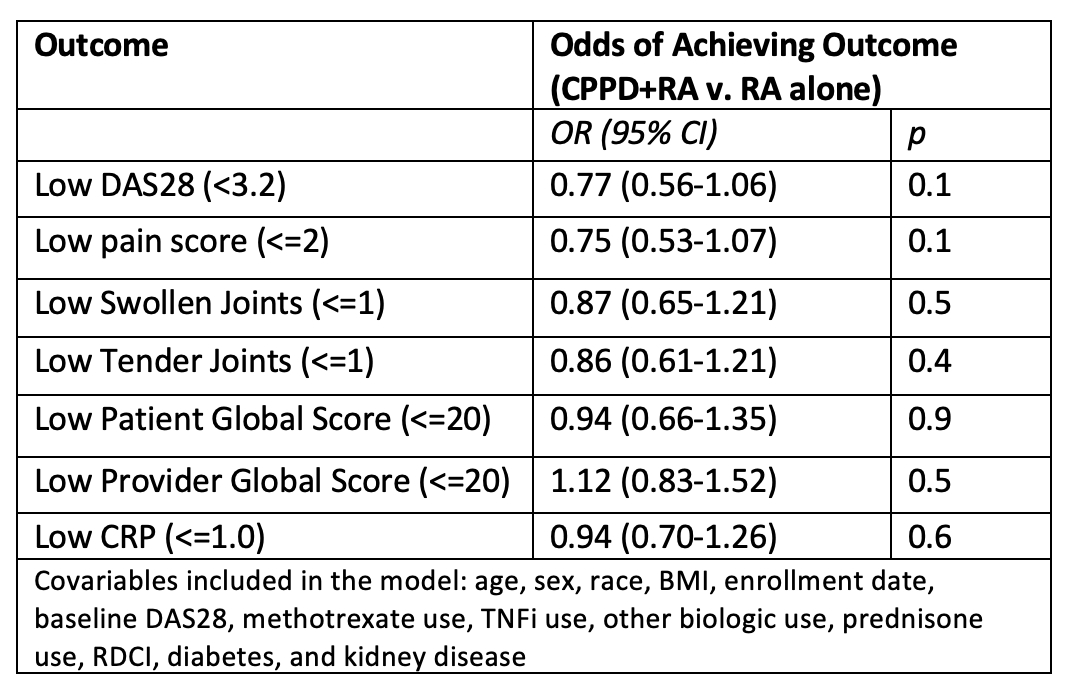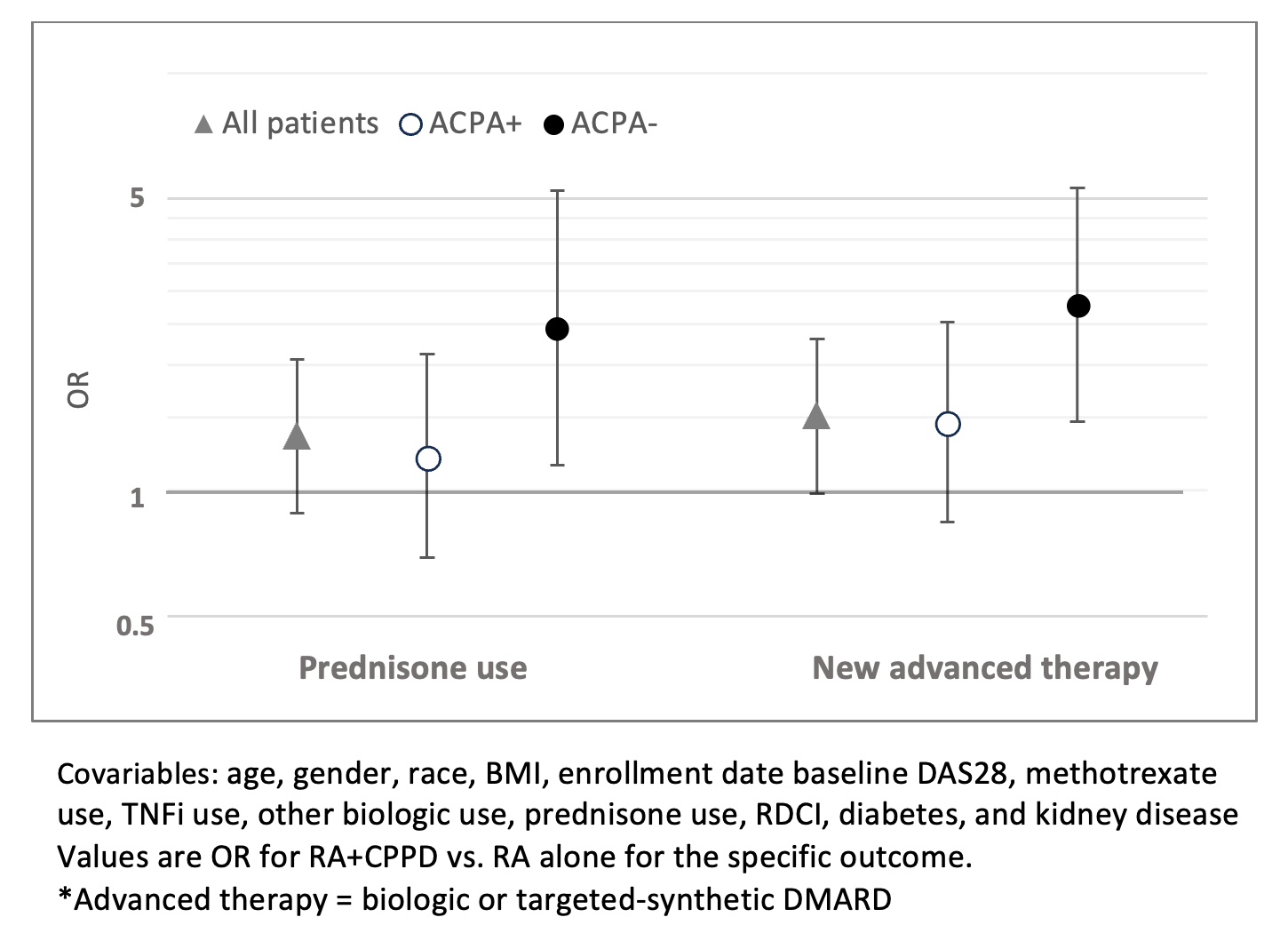Session Information
Session Type: Poster Session B
Session Time: 10:30AM-12:30PM
Background/Purpose: Calcium pyrophosphate deposition disease (CPPD) is a common crystalline arthritis that can both present alongside rheumatoid arthritis (RA) and, given its similar pattern of joint involvement, may confuse the clinical picture. Several studies demonstrated that CPPD is more common in patients with seronegative RA than seropositive RA; however, few studies have evaluated the association between CPPD, clinical characteristics, and long-term outcomes. We aimed to compare the characteristics and long-term outcomes of Veterans with concurrent CPPD and RA to patients with RA without CPPD.
Methods: We studied patients with RA fulfilling ACR classification criteria enrolled in the Veteran’s Affairs RA (VARA) registry and identified patients with CPPD using administrative codes that have been previously validated in the VA with high positive predictive value (PPV; 91%). We compared characteristics of patients with concurrent CPPD and RA to those with RA alone at enrollment. We also used parsimonious multivariable logistic regression incorporating generalized estimating equations to study the probability of achieving a low disease activity score (DAS28) as well as the probability of receiving prednisone and new advanced therapies over follow-up adjusting for age, gender, race, BMI, and other pre-hypothesized confounders including baseline disease activity, medication use, and comorbidities, stratified by ACPA status.
Results: Among 2771 U.S. veterans with RA, we identified 64 (2.4%) patients with CPPD at enrollment. Patients with CPPD were older [68.5 (9.0) v. 64.2 (11.0), p< 0.001] and had higher rates of comorbidities including osteoarthritis (93.8% v. 80.1%, p=0.007), spine disease, and diabetes (Table 1). Patients with concurrent CPPD were also less likely to be positive for ACPA (63.5% v. 77.8%, p=0.01), RF, and HLA-DRB1 shared-epitope alleles, and were older at RA diagnosis (59.9 vs. 52.9). RA disease activity and medication use were similar between the groups at enrollment. While those with CPPD were somewhat less likely to achieve low disease activity over time compared to controls, this was not statistically significant (Table 2). The use of prednisone and the initiation of new advanced therapies was similar overall. However, among seronegative patients, CPPD patients exhibited more prednisone use (OR 2.44 [95% CI 1.15-5.22]) and more frequent initiation of advanced therapies (OR 2.79 [95% CI 1.46-5.32]) during follow up.
Conclusion: There was a higher prevalence of CPPD among patients with RA compared to the general VA population (2.3% v. 0.5%).1 Characteristics of those with CPPD (older at diagnosis, more comorbidity, less seropositivity) suggest misclassification of RA in some cases. Seronegative RA patients with CPPD were more likely to use prednisone and change therapies, the latter perhaps related to misclassification of the RA diagnosis. While the PPV for diagnostic codes for CPPD is high, the sensitivity of the administrative algorithm is presumed to be low and likely underestimated the prevalence of CPPD. Thus, further study will be needed to better define the prevalence of CPPD in this population and to define the true scope of its impact.
1. Kleiber et al. AC&R. 2017;69(9):1400-1406.
To cite this abstract in AMA style:
Schanzer N, Mikuls T, England B, Wysham K, Rojas J, brian S, Wallace B, Elam R, Reimold A, Kerr G, Richards J, Kunkel G, Lee I, Smith I, Monach P, Cannon g, Baker J. Characteristics and Long-term Outcomes of Patients with Rheumatoid Arthritis and Concurrent Calcium Pyrophosphate Deposition Disease [abstract]. Arthritis Rheumatol. 2024; 76 (suppl 9). https://acrabstracts.org/abstract/characteristics-and-long-term-outcomes-of-patients-with-rheumatoid-arthritis-and-concurrent-calcium-pyrophosphate-deposition-disease/. Accessed .« Back to ACR Convergence 2024
ACR Meeting Abstracts - https://acrabstracts.org/abstract/characteristics-and-long-term-outcomes-of-patients-with-rheumatoid-arthritis-and-concurrent-calcium-pyrophosphate-deposition-disease/



